Hello everyone, I hope everything is doing alright, as for me it wasn't a particularly happy day, quite stressful and full of negative thoughts but thankfully improved after I went planting 18 tomato plants and being able to take some pics of my favourite bird that lives in the area I live in: the crow, more specifically hooded crow (Corvus cornix). The title of this photography blog is more an excuse to talk about preening, an important behaviour among our feathered dinosaur friends. And to do this I will also share some pics of this hooded crow I've noticed these days. Whenever I see these birds my eyes shines and heart fills with joy (my mood improves a lot), and I liked a lot that when I opened my window the crow didn't fly away when seeing me, same happened today when I was outside after finishing my job with the tomatoes. He/she just enjoyed preening him/herself.
The Cleaning
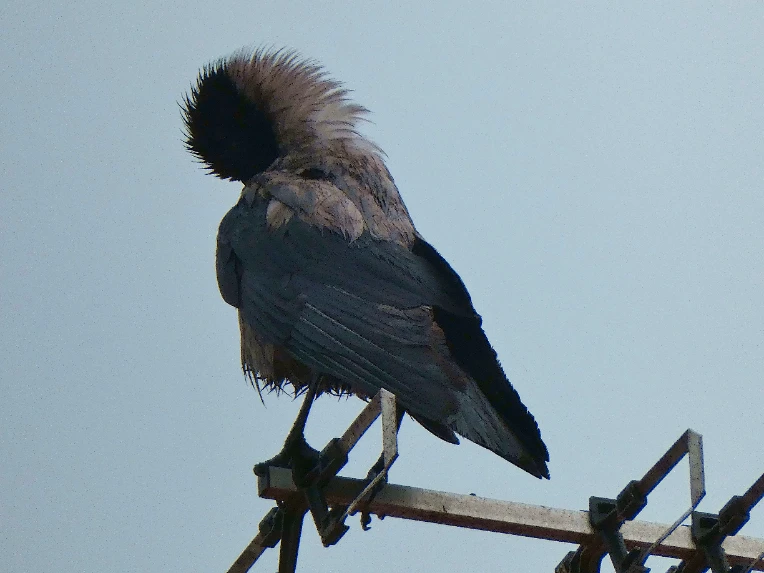
One of first pics I took of him/her. He/she was drying off while cleaning and preening. What is preening? It is a maintenance behaviour found in birds that involves the use of the beak to position feathers, interlock feather barbules that have become separated, clean plumage, and keep ectoparasites in check. Feathers contribute significantly to a bird's insulation, waterproofing and aerodynamic flight, and so are vital to its survival. Because of this, birds spend considerable time each day maintaining their feathers, primarily through preening. Several actions make up preening behaviour. Birds fluff up and shake their feathers, which helps to "rezip" feather barbules that have become unhooked:
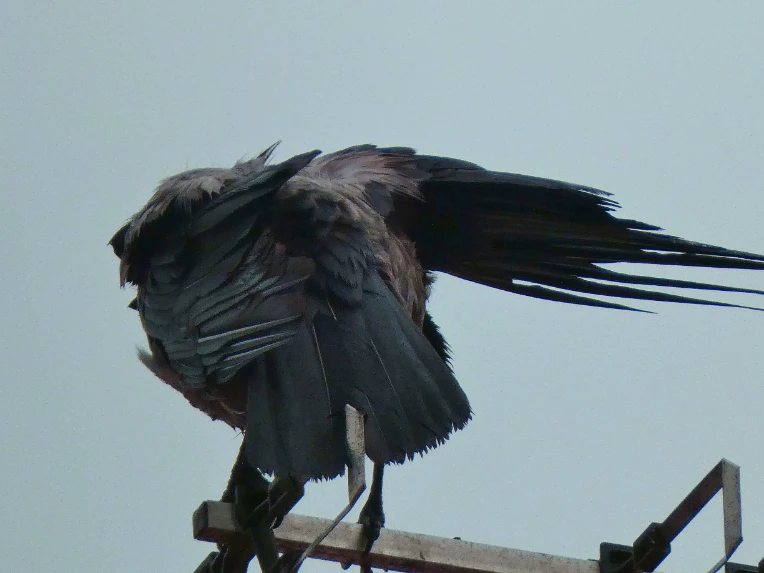
Birds also draw the long flight feather individually and firmly through the bill to restore the vanes’ integrity:
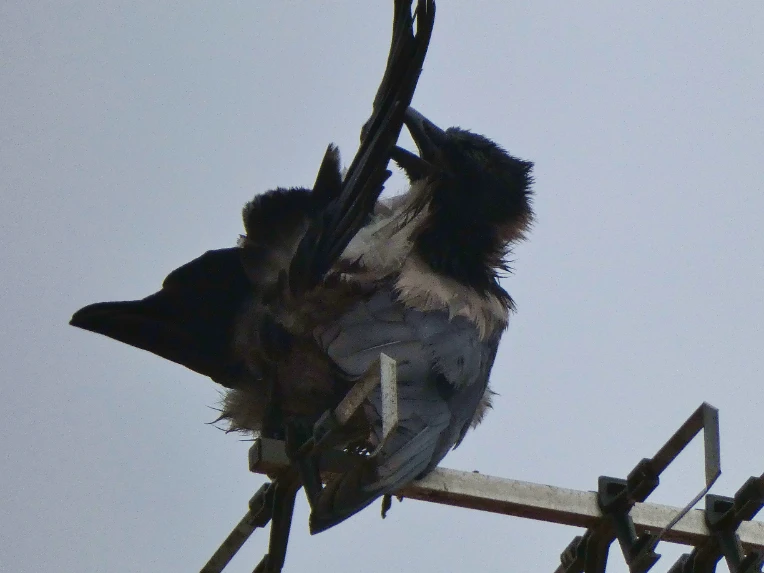
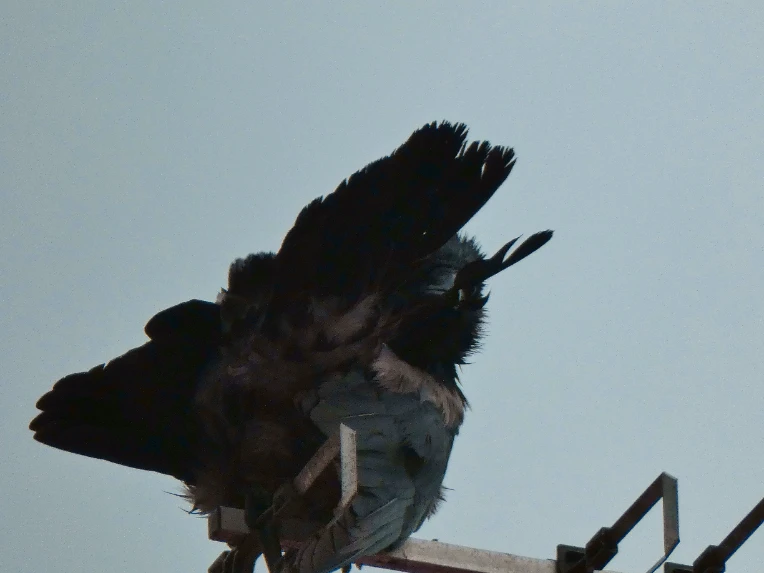
Using their beaks, they gather preen oil from a gland at the base of their tail and distribute this oil through their feathers as you can see in this other photo:
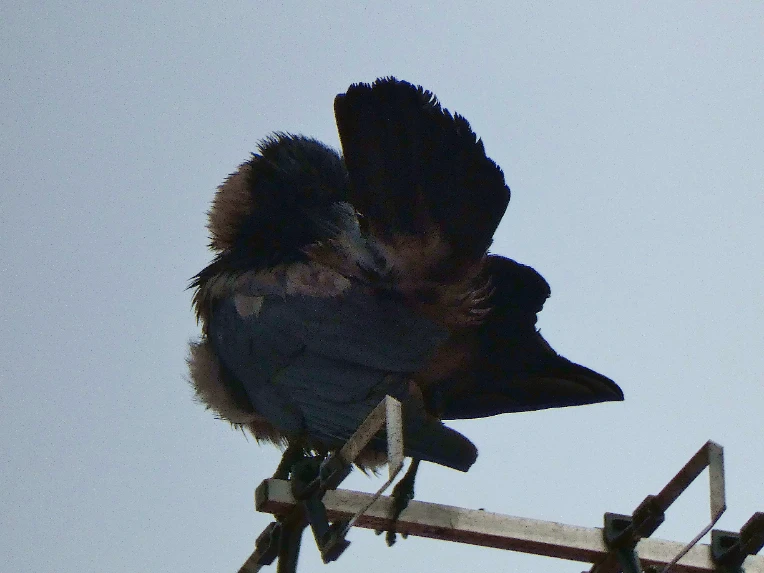
Allopreening can happen between mated individuals or or between flock members in a social species. Such behaviour may assist in effective grooming, in the recognition of individuals (mates or potential sexual partners), or in reducing or redirecting potential aggressive tendencies in social species. Most allopreening is confined to the head and neck, smaller efforts being directed towards other parts of the body. I could take a photo of allopreening in a crow pair (I think the crow on the right is the male because in other photos of the same pair he was slightly bigger than the one on the left):
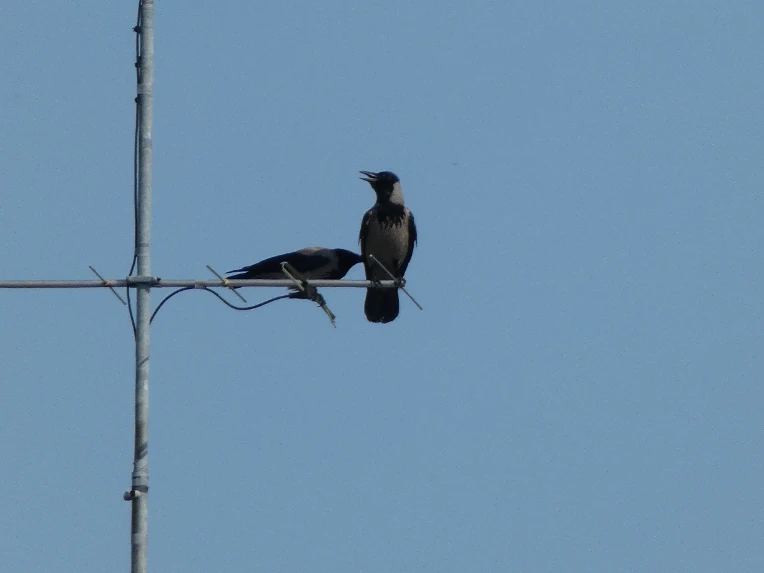
Preening is a vital behaviour in feather maintenance and despite it's an innate behaviour (birds are born knowing the basics) there is also a learned component because it has been shown that birds that are hand-reared without access to a role model have abnormalities in their preening behaviours (1). Despite spending considerable time in their efforts, they do not use proper techniques to groom effectively and may do a poor job overall as a result (2). What happens when feathers are displaced? They can cause birds considerable trouble; such feathers might become damaged, could interrupt the smooth flow of air over a flying bird, or might allow the bird's body heat to escape. Preening allows a bird to reposition such displaced feathers. There is evidence that filoplumes, specialised feathers buried under a bird's outer covering of contour feathers, help to signal when contour feathers have been displaced.
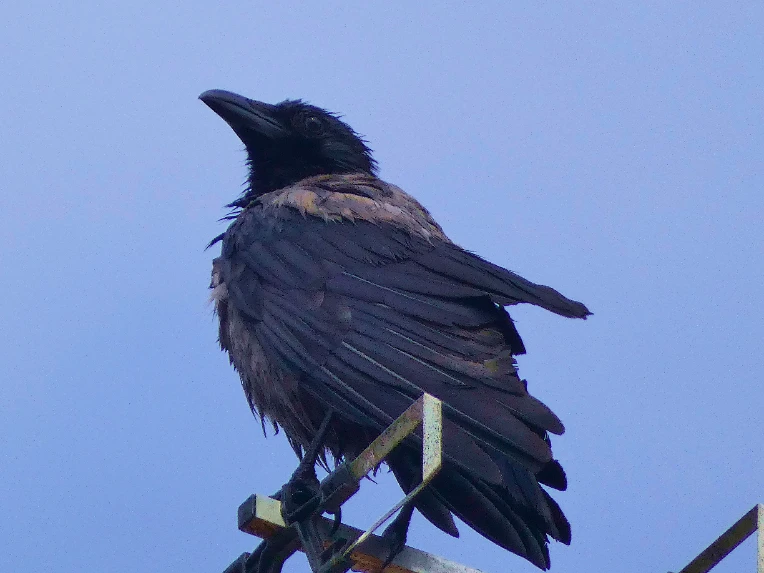
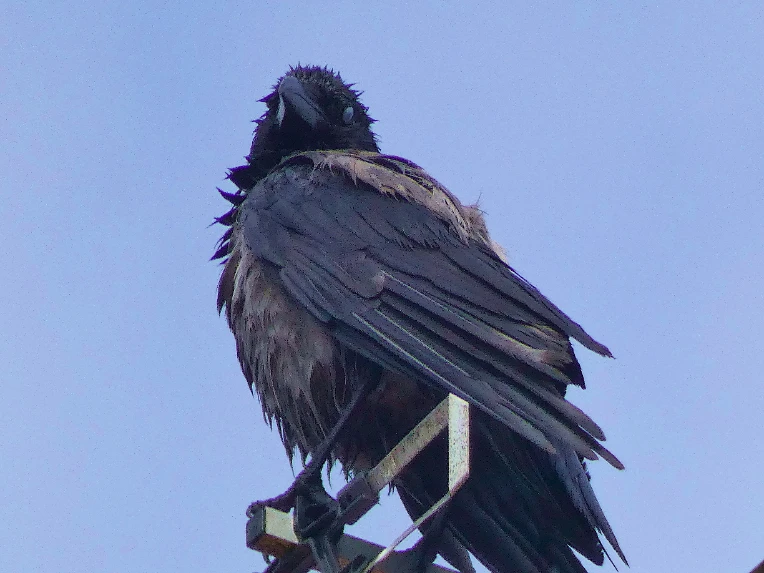
More than 9% of each day on maintenance behaviours, preening occupying over 92% of that time (3). In most of the studied species where the bird's sex could be determined in the field, males spent more time preening than females, though this was reversed in ducks (4). Some ratites, which are not dependent on their feathers for flight, spend far less time on maintenance behaviours. One study of ostriches found that they spent less than 1% of their time engaged in such behaviours (5). Fully grown feathers are essentially dead structures, so it is vital that birds have some way to protect and lubricate them. Otherwise, age and exposure cause them to become brittle. To facilitate that care, many bird species have a preen or uropygial gland, which opens above the base of the tail feathers and secretes a substance containing fatty acids, water, and waxes. The bird gathers this substance on the bill and applies it to the feathers (6). Waterbirds have larger uropygial gland, however, studies have found no clear correlation between the size of the gland and the amount of time a species spends in the water; it is not consistently largest in those species that spend the most time in the water (7).
Some birds have symbiotic relationship with bacteria to defended their feathers from feather-degrading bacteria, lice and fungi. Eurasian hoopoes have this relationship with Enterococcus faecalis against the growth of the feather-degrading bacteria Bacillus licheniformis. E. faecalis inhibits the growth by releasing bacteriocin (8). Female hoopoes transfer preen oil onto their brood patches and eggs, which results in the transfer of bacteria as well. Preen oil and bacteria are rubbed into microscopic pits on the surface of the eggs during incubation. This alters the colour of the eggs, usually darkening them, but there is also evidence that the bacteria may help to protect the developing chicks (9). Other studies have shown that removing or restricting access to the uropygial gland typically results in a higher bacterial parasite load on the plumage, though not necessarily of feather-degrading bacterial species.
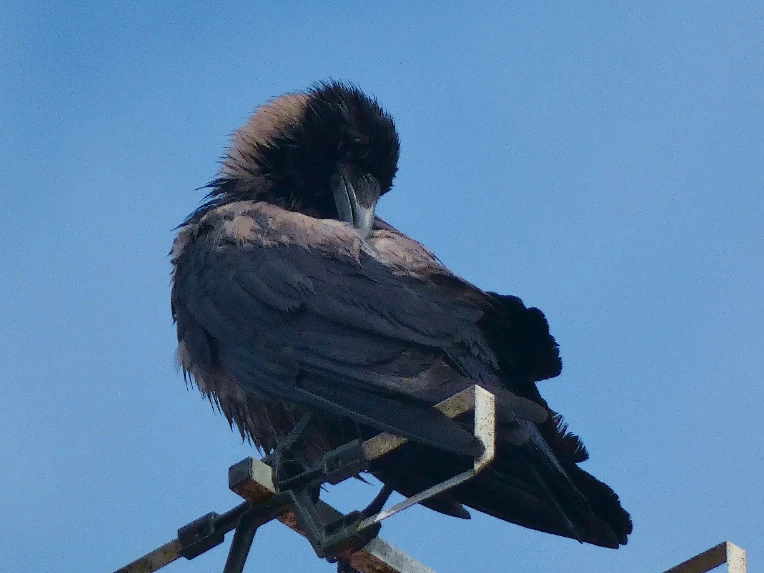
Preen oil helps to maintain the waterproofing of a bird's plumage. Though the oil does not provide any direct waterproofing agent, it helps to extend the life of the feather – including the microscopic structures (the barbs and barbules) which interlock to create the waterproof barrier (10). Birds such as bustards, woodpeckers, some parrot species, emu, rheas, kiwis, cassowaries and ostriches lack of the preen gland.
Preening may help to send sexual signals to potential mates because plumage colouration (which can be altered by the act of preening) can reliably reflect the health or "quality" of its bearer. In some species, preen oil is used to cosmetically colour the plumage. During the breeding season, the preen oil of the great white pelican becomes red-orange, imparting a pink flush to the bird's plumage (11).
The preen oil of several gull and tern species, including Ross's gull, contains a pink colourant which does the same. The heads of these birds typically show little pink, because of the difficulty of reaching those areas with preen oil. The yellow feathers of the great hornbill are also cosmetically coloured during preening. The preen oil of the Bohemian waxwing increases the UV reflectance of its feathers. Ritualised preening is used in courtship displays by several species, particularly ducks; such preening is typically designed to draw attention to a modified structure (such as the sail-shaped secondaries of the drake mandarin duck) or distinctive colour (such as the speculum) on the bird. Mallards of both sexes will lift a wing so that the brightly coloured speculum is showing, then will place their bill behind the speculum as if preening it. Courtship preening is more conspicuous than is preening for feather maintenance, using more stereotypical movements.
https://archive.org/details/birdwatchershand00ehrl
Preening may be performed as a displacement activity. In some cases, it is done in place of another activity that birds are strongly motivated, but unable, to do. In one study, black-headed gulls which were prevented from incubating a full clutch of eggs (by the removal of eggs from their nest) responded by preening and nest building – both displacement activities. When all three eggs in their regular clutch were removed, the gulls showed a significant increase in the amount of time they spent preening (12). The conflict between two incompatible drives, such as incubating and escape, can lead a bird to engage in displacement activities.
Allopreening, in most cases, involves members of the same species, although some cases of interspecific allopreening are known; the vast majority of these involve icterids, though at least one instance of mutual grooming between a wild black vulture and a wild crested caracara has been documented:
https://sora.unm.edu/sites/default/files/journals/condor/v086n02/p0214-p0215.pdf
Preening is a fantastic and fascinating activity, I love watching birds preening themselves, but it has also a dark side; if a bird is exposed to some pollutants, such as leaking petroleum (I still have vivid images in my mind from the first Gulf War with those poor, innocent birds....), they can quickly lose the preen oil from their feathers. This causes a loss of heat regulation and waterproofing, and rapidly leads to the bird becoming chilled. If waterbirds are exposed, they can lose both buoyancy and the ability to fly; this means they must swim constantly to stay warm and afloat (if they cannot reach land), and eventually die of exhaustion. While preening in an effort to clean themselves, they may ingest harmfully large amounts of the petroleum. Ingested oil can cause pneumonia, as well as liver and kidney damage. Studies done with black guillemots showed that even small amounts of ingested oil caused the birds physiological distress. It interfered with the foraging efficiency of adults and decreased the growth rates of young birds.
Allopreening may facilitate disease transmission between infected and non-infected individuals. West Nile virus has been found in the feather pulp of several species of corvid (and we know they are very susceptible to the virus), for instance, meaning that birds that preen infected partners might become infected themselves. Even preening its own body may expose a bird to pathogens. There is evidence that water-borne avian influenza virus is "captured" by the preen oil on feathers, providing a possible route for infection. The ingestion of parasites during preening may result in infection; the tick-borne disease louping ill virus can be transmitted to red grouse if the bird consumes a tick carrying the disease.
Nicotine and/or air fresheners may trigger overpreening in caged species (seriously, screw you if you smoke in the presence of a bird or any other living creature), neuropathy can cause it too. Confining a bird with an incompatible or very dominant cage mate can lead to excessive allopreening, which can result in feather plucking or injury (13).
I also love how these photos can be used as reference material for bird wings (feel free to use them as references for your drawings, just a credit to this blog and I am more than happy^^).
Well, have a male common redstart (Phoenicurus phoenicurus) photo as final picture of this blog:
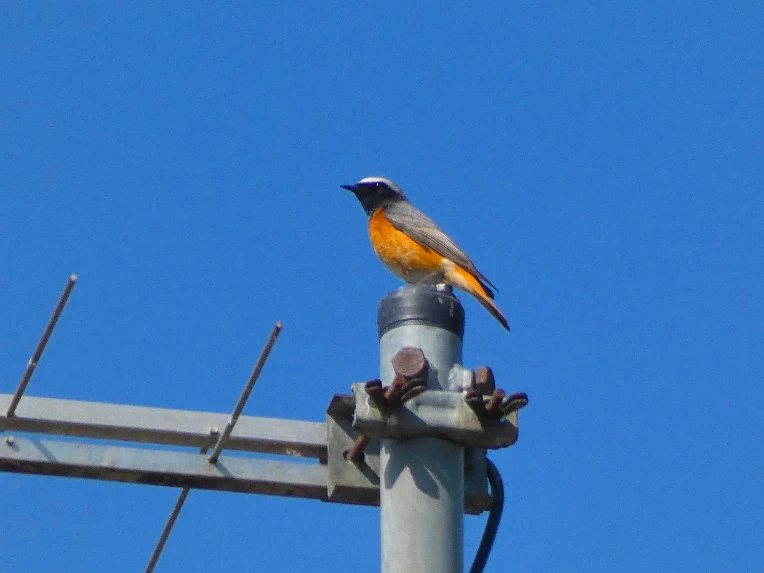
This fella is almost 3 years old. I memorized his voice and I know where he lives judging by his singing frequency in the area.
References and footnotes:
(1) Moon-Fandli, Alice M.; Dodman, Nicholas A. & O'Sullivan, Richard L. (1999). "Veterinary Models of Compulsive Self-grooming: Parallels with Trichotillamania". In Stein, Dan J.; Christenson, Gary A. & Hollander, Eric (eds.). Trichotillomania. Washington, DC: American Psychiatric Press. ISBN 978-0-88048-759-7.
(2) Luescher, Andrew U., ed. (2006). Manual of Parrot Behavior. Ames, IA, US: Blackwell Publishing. ISBN 978-0-8138-2749-0.
(3) Cotgreave, Peter & Clayton, Dale H. (1994). "Comparative analysis of time spent grooming by birds in relation to parasite load" (PDF). Behaviour. 131 (3): 171–187. doi:10.1163/156853994X00424. ISSN 0005-7959. JSTOR 4535237
(4) Ibidem
(5) Williams, Joseph B.; Siegfried, W. Roy; Milton, Suzanne J.; Adams, Nigel J.; Dean, W. R. J.; du Plessis, Morne A. & Jackson, Sue (March 1993). "Field metabolism, water requirements, and foraging behavior of wild ostriches in the Namib". Ecology. 74 (2): 390–404. Bibcode:1993Ecol...74..390W. doi:10.2307/1939301. JSTOR 1939301
(6) Campbell, Bruce & Lack, Elizabeth, eds. (1985). A Dictionary of Birds. Carlton, UK: T and A D Poyser. ISBN 978-0-85661-039-4
(7) Montalti, Diego & Salibián, Alfredo (2000). "Uropygial gland size and avian habitat". Ornitologia Neotropical. 11: 297–306.
(8) Ruiz-Rodríguez, M.; Valdivia, E.; Soler, Juan J.; Martín-Vivaldi, M.; Martín-Platero, A. M. & Martínez-Bueno, M. (2009). "Symbiotic bacteria living in the hoopoe's uropygial gland prevent feather degradation" (PDF). Journal of Experimental Biology. 212 (22): 3621–3626. Bibcode:2009JExpB.212.3621R. doi:10.1242/jeb.031336. ISSN 0022-0949. PMID 19880722. S2CID 9884724
(9) Martínez-García, Ángela; Soler, Juan J.; Rodríguez-Ruano, Sonia M.; Martínez-Bueno, Manuel; Martín-Platero, Antonio Manuel; Juárez-García, Natalia & Martín-Vivaldi, Manuel (November 2015). "Preening as a vehicle for key bacteria in hoopoes". Microbial Ecology. 70 (4): 1024–1033. Bibcode:2015MicEc..70.1024M. doi:10.1007/s00248-015-0636-1. hdl:10261/123119. ISSN 1432-184X. PMID 26078039. S2CID 8342661
(10) Lovette, Irby C. & Fitzpatrick, John W., eds. (2016). Handbook of Bird Biology (3rd ed.). Oxford, UK: John Wiley & Sons. ISBN 978-1-118-29105-4.
(11) Delhey, Kaspar; Peters, Anne & Kempenaers, Bart (2007-01-01). "Cosmetic coloration in birds: occurrence, function, and evolution". The American Naturalist. 169 (S1): S145 – S158. Bibcode:2007ANat..169S.145D. doi:10.1086/510095. ISSN 0003-0147. PMID 19426089. S2CID 29592388
https://archive.org/details/birdwatchershand00ehrl
(12) Moynihan, M. (January 1953). "Some displacement activities of the black-headed gull". Behaviour. 5 (1): 58–80. doi:10.1163/156853953X00041. ISSN 0005-7959. JSTOR 4532768
https://sora.unm.edu/sites/default/files/journals/condor/v086n02/p0214-p0215.pdf
(13) Coles, Brian H., ed. (2007). Essentials of Avian Medicine and Surgery (3rd ed.). Oxford, UK: Blackwood Publishing Ltd. ISBN 978-1-4051-5755-1
StitchMiss
Love pictures again ^-^ The first one is my fav (I love birds with crowns). They all look very healthy and happy, at least :D
ShangXian
That crown is visible when the crow and other bird species perform that movement when preening. I like when they do it because it makes them look royal. Well, this crow is definitely one who cares about his/her health. I photographed him/her at 16:58, I will try to keep an eye on his/her preening activity to keep track of hours (this is second time I see him/her on the same perch). I now know the crows' area lunch and dining hours during springtime and autumntime after spying on them a lot, lol. I hope one day to photograph rooks and jackdaws as they are other birds present in the area, but they are more difficult to find especially the rook.
curiously "crown" is also a body part of the bird's head: https://swartzentrover.com/cotor/Photos/Hiking/Birds/BirdPages/Anatomy/blb_02_03_01.jpg